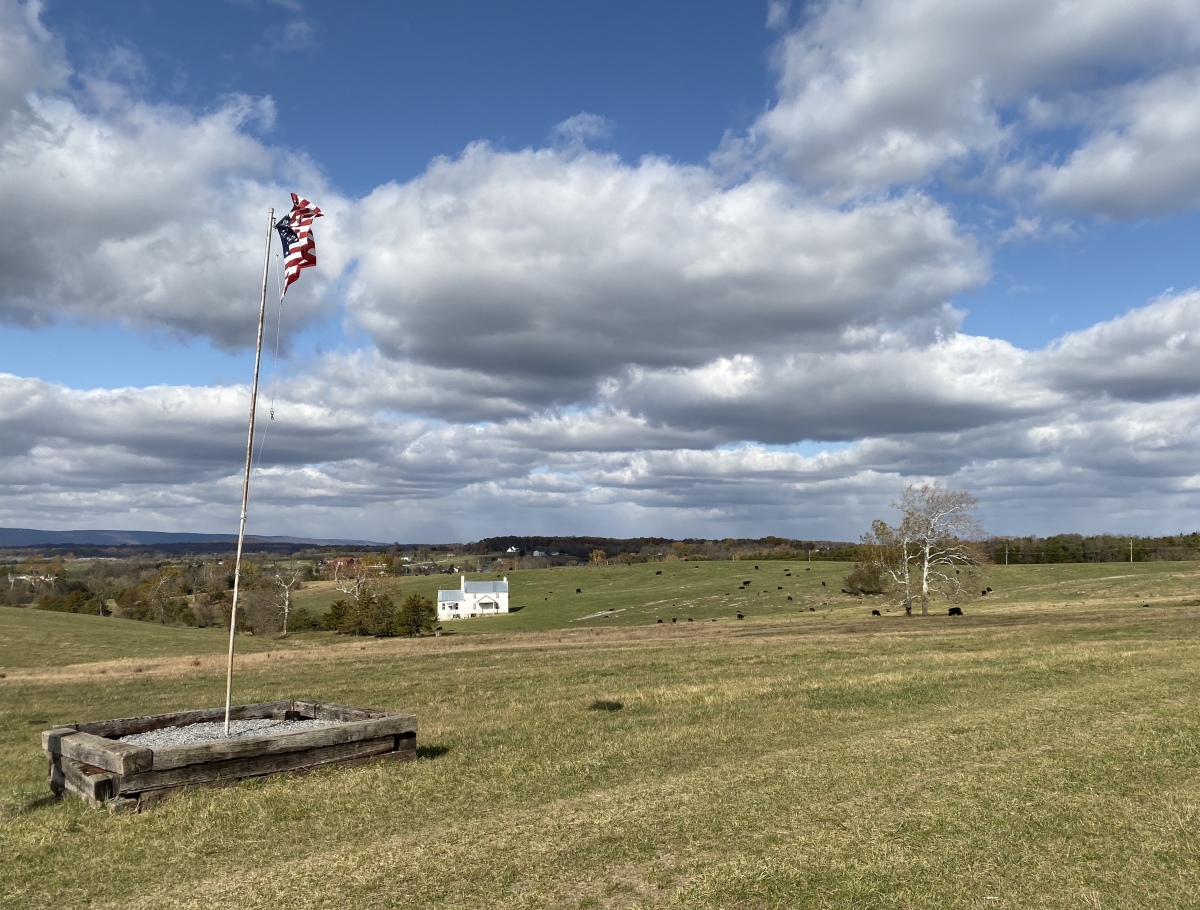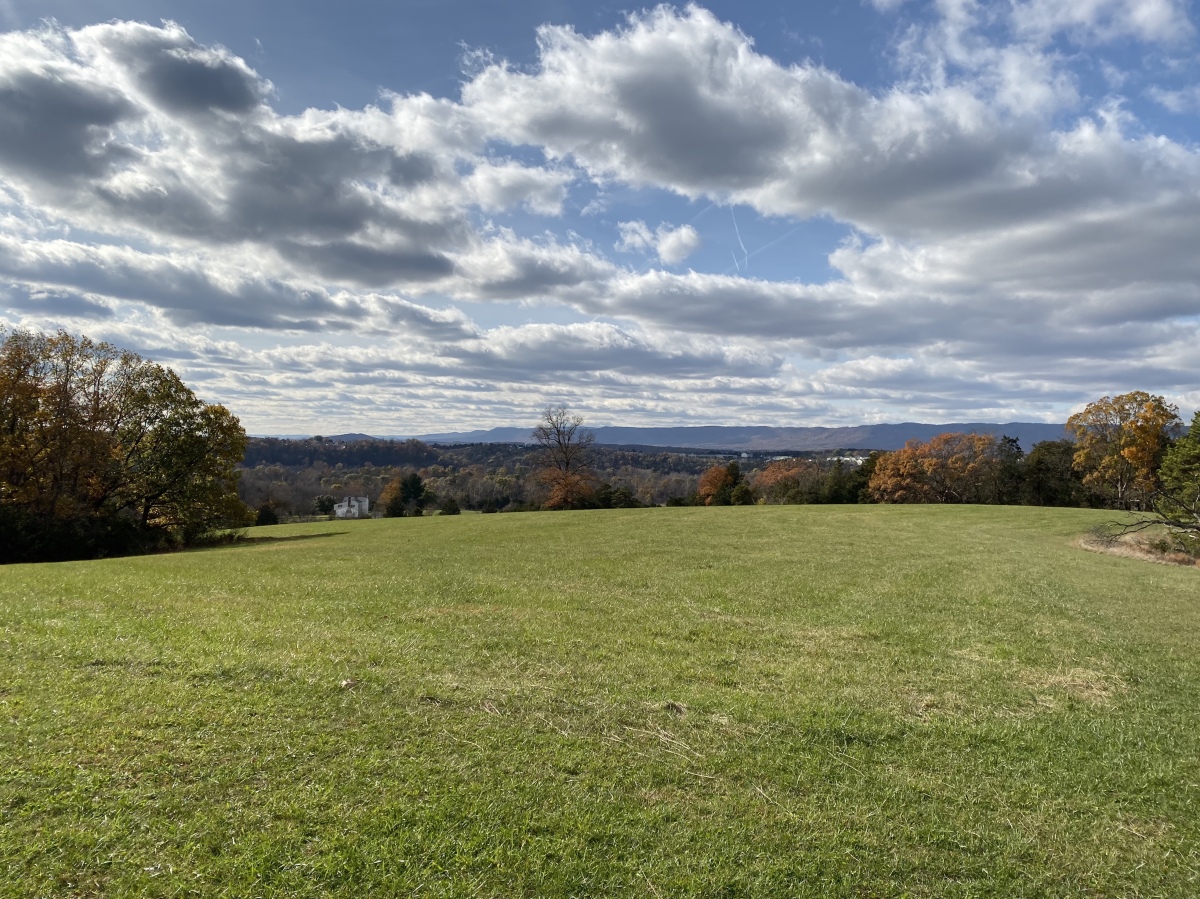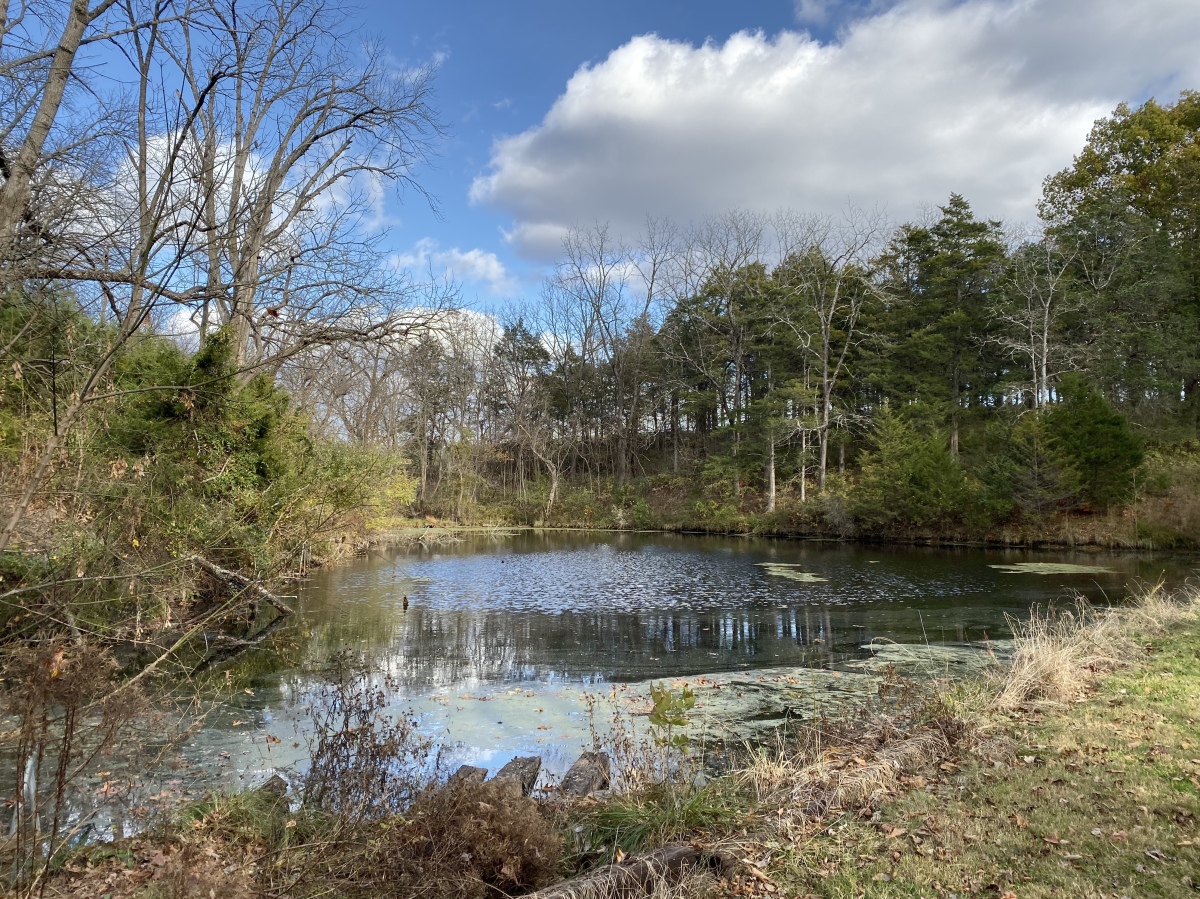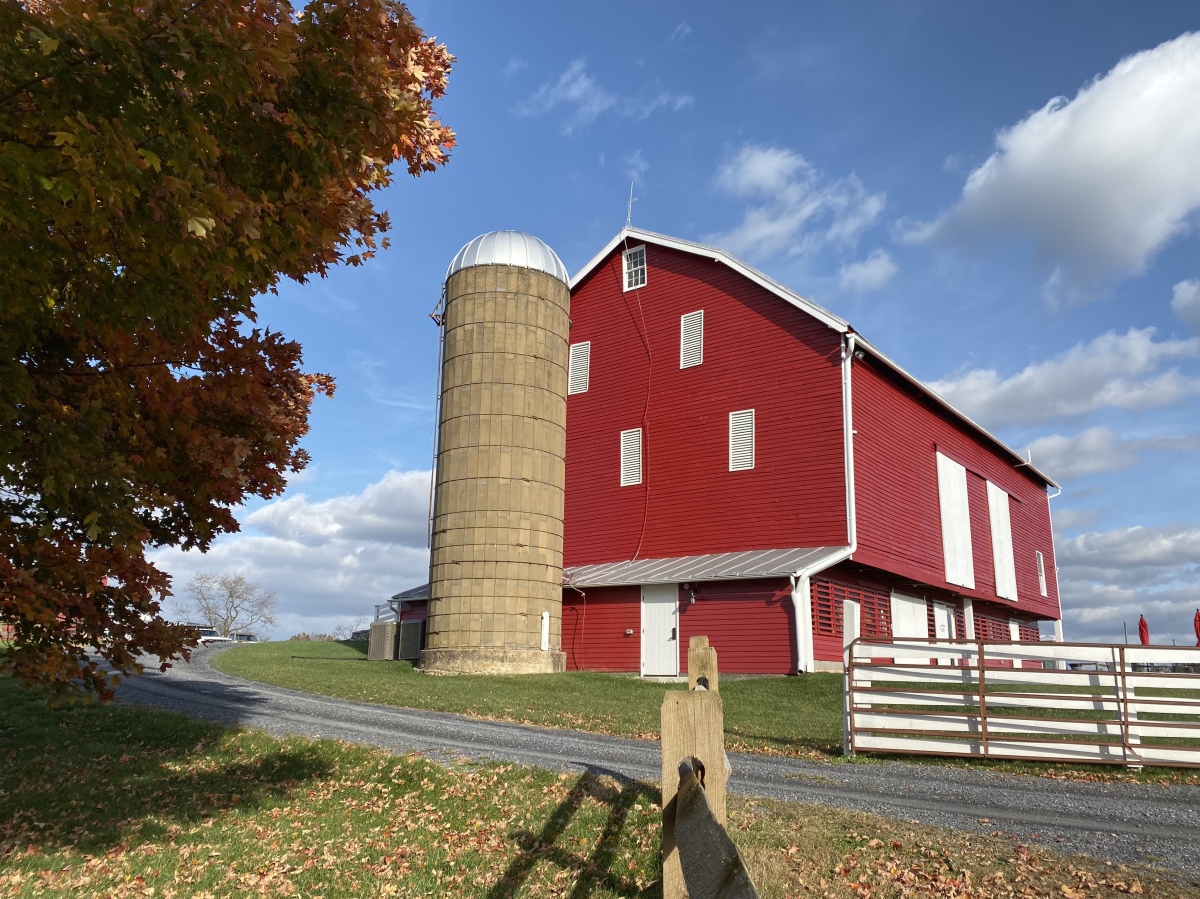In November, I visited Cedar Creek & Belle Grove National Historical Park in Middletown, Virginia. This park was created by the U.S. Congress in 2002 with the mission to preserve and interpret the history of the area from the time of the first human settlement until today.
It seems the first people arrived in Virginia’s Shenandoah Valley around 10,000 years ago and lived on wildlife and plants. Eventually they cultivated the land, growing a variety of crops. Tribal warfare pushed out most American Indians before European settlers arrived. In 1731, Jost Hite led the first of the new settlers, finding fertile soil and abundant water. They discovered that wheat flourished and made high quality flour. By the late 1700s, 96% of farmers in the Valley were growing wheat to sell commercially, mostly to Great Britain. During this Age of Grain, a few plantations were established. Hundreds of mills sprung up along the valley’s fast-flowing streams, which powered the wheels that turned the heavy millstones, grinding the grain into flour.
The Union and Confederacy fought over the Shenandoah Valley throughout the war. But in 1864, the Union attempted to destroy the “Breadbasket of the Confederacy.” President Lincoln aimed to devastate the Southern economy and General Ulysses S. Grant wanted the Valley to “remain a barren waste.” The Union systematically burned crops, mills, factories and two thousand barns, along with confiscating or killing thousands of farm animals, leaving residents with no food for themselves, let alone for either Confederate or Union soldiers.

The Battle of Cedar Creek
On October 19, 1864, Confederate soldiers crossed Cedar Creek and the North Fork of the Shenandoah River to surprise sleeping Union soldiers. The Confederates chased the Union soldiers north. By late morning, The Confederates thought they’d won. However, Union General Philip Sheridan was racing south from Winchester, determined to rally his stunned troops. By sunset, the Confederates were defeated, and the Confederate Army of the Valley ceased to exist. Over 8,600 Union and Confederate men were killed, wounded or captured in the second bloodiest of the Shenandoah Valley’s battles.
At the Visitor Contact Station, I was able to watch an active re-enactment of the battles on a topographical map with blue lights showing the Union troops and red lights showing the Confederates.
I stopped to have a look at the Cedar Creek Battlefield, and saw a lone white house. Probably built around 1800, the clapboard-covered log house known as the Heater House was the center of a prosperous 600 acre farm owned by Solomon and Caroline Wunder Heater. Although two of her sons died in Confederate service, Mrs. Heater, a native of Pennsylvania, was a Union supporter and frequently provided shelter and supplies to the federals. Her loyalty was ultimately repaired by a 1901 federal grant for some wartime damages.

Heater House

Cedar Creek Battlefield
Thoburn’s Redoubt, consisting of 134 acres and part of the historic Bowman-Hite farm, was where the Union Army under Col. Joseph Thoburn encamped among the bluffs north of Cedar Creek.
The opening attack of the battle took place in these fields and woods around 5 a.m. on October 19, 1864. The Union troops, utterly surprised, were completely routed in the heavy fog and predawn darkness. Col. Joseph Thoburn’s attempts to rally his men failed, and he was later killed during the retreat through the streets of Middletown. The trail here covers part of the ground where Thoburn’s troops were positioned and then overrun by the Confederate assault.

The Thoburn Redoubt Trail
Signal Knob, 1500 feet above the Valley floor, marks the northern end of the Massanutten Mountain Range. On October 17, two days before the battle, Confederate officers utilized the advantages provided by Signal Knob, where there was a longstanding signal station. From their viewpoint, they could see Sheridan’s army around Cedar Creek and could pick out all the units’ positions towards Belle Grove. This gave them the advantage in the attack against the Union army in the first battle on the 19th.

Signal Knob
A monument to the 128th New York Regiment was erected in 1907. These men had borne the brunt of the Confederate attack against their position around 6:00 a.m.

monument at Cedar Creek
Following the successful Confederate surprise attack, Union forces from the 8th and 19th corps formed battle lines across the woods and fields shown below, hoping to slow the overwhelming Southern assault moving in this direction. The fighting delayed the Confederate advance long enough for the rest of the Union army, on the other side of the Valley Pike, time to readjust their lines.

Morning Attack Trails
The Middletown Cemetery, on a knoll west of the village, was the only point Union officers believed they could slow the Confederate advance. From this high ground, General George Getty’s division, about 2,500 strong, repulsed two Confederate assaults. Frustrated, the Confederates massed 30 cannons, and with a third attack, they finally forced Getty to withdraw.

Mt. Carmel Cemetery
General Philip Sheridan arrived on the battlefield following his famous and dramatic “Ride” from his headquarters in Winchester. Along the way, he ordered Captain (and future U.S. President) William McKinley to stop retreating units and direct them back to the fighting. At the end of his ride, near the point shown below, Sheridan rejected all suggestions to retreat and rode the length of the battle lines to restore his men’s morale. Soon after, he planned a counterattack.

Sheridan arrives

Sheridan arrives
At 4:00 p.m., Sheridan’s reformed battle lines stretched almost two miles east to west, with cavalry anchoring both ends. Their counterattack took them back over the fields they had earlier fled. The battle hung in the balance due to fierce Confederate resistance, but the Union struck hard and the Confederate line unraveled, turning their retreat into a rout. Sheridan had snatched a “victory from the jaws of defeat.”

barn near Union counterattack
Cedar Creek was a momentous Union victory and marked the end of Sheridan’s overwhelmingly successful campaign and a turning point in the war. Occurring on the eve of the presidential election, the victory assured Abraham Lincoln’s reelection three weeks later. Within six month of his election, the Civil War was over.
At the end of the Civil War, the farms of the Shenandoah Valley were devastated. No fences or cultivated fields were visible for miles. Labor shortages continued due to the abolition of slavery and heavy fatalities of men of working age. Food prices were inflated due to shortages.
After the war, Valley farmers returned to cultivating the land, turning to mixed farming, with a focus on wheat. By 1900, wheat yields had increased 63%.
Before visiting the other part of the park, Belle Grove, I stopped for a lunch of a pulled chicken sandwich at the cute Shaffer’s BBQ and Market.
After lunch, I ventured to Belle Grove. As small family-owned farms were booming in the late 1700s, Isaac Hite Jr. began building Belle Grove on the 483 acres that his father had given him in southern Frederick County. Within twenty years, Hite had increased his holdings to more than 7,500 acres and owned more than 100 slaves. He lived here with his first wife Nelly Madison, sister of President James Madison.
Belle Grove was Union headquarters during the war, and was surrounded by hundreds of supply wagons, ambulances and tents. As the Confederates advanced to the plantation manor house, the Union scrambled to evacuate them to safety. Most escaped capture, although the fighting was intense.
The Belle Grove Bank Barn was built in 1918 by J. Herbert Brumback, who owned Belle Grove from 1907-1929. The traditional German style barn housed farm animals on the lower level and a threshing floor, granary and haymows in the upper level.

Belle Grove
Belle Grove’s blacksmiths were mostly slaves, and they were skilled in many tasks: forging nails, hooks and horseshoes, making and mending farm tools such as axes, shovels, plows and hammers, as well as shoeing horses. They also made and repaired items used in the house. Eating utensils, candlesticks, hinges and door latches were common fabricated items.

Belle Grove Forge

cow at Belle Grove
Of the many Hite homes in the Valley, Belle Grove is the grandest and the only one open to the public. It is open for guided touring only, but not at the time of year I was there.
The Manor House was completed in 1797. Around 1820, the west wing was added to increase living space on the upper level and work space in the basement.

Belle Grove

Belle Grove

Belle Grove

Belle Grove

Belle Grove
*Friday, Nov 8, 2019*
*11,075 steps, or 4.69 miles*
**************
On Sundays, I post about hikes or walks that I have taken in my travels; I may also post on other unrelated subjects. I will use these posts to participate in Jo’s Monday Walks or any other challenges that catch my fancy.
This post is in response to Jo’s Monday Walk: A Sally through the Salt Marshes.











Very interesting history.
LikeLike
In our neck of the woods, we have Civil War history everywhere! 🙂
LikeLike
The photographs of the land are peaceful, bucolic. Sad to have to think of the warfare fought there, though I guess we must. There were people from my family on both sides of the Civil War, as was not uncommon. It seems somehow unfair to destroy food and farms so that armies go without. Such basic means for fundamental human needs. And presuming the war will someday be over, how much will have to be rebuilt–and how to feed all in the mean time? Well, I guess this makes up one tragedy of many tragedies from war, especially one fought at home.
The photographs really are outstanding, Cathy, as is the narrative. I hope your new week is off to a great start.
LikeLike
Thank you, Christopher. You know how hard it is to imagine the lives lost and the utter violence when you go to these battlefields. They’re always so peaceful looking, so it’s hard to envision such carnage taking place there. I think many families had people on both sides during the war, just as we have today in our virtual civil war. The Shenandoah Valley was such a breadbasket, and to think of food and farms being destroyed, and people’s livelihoods, just for the sake of winning a war is incomprehensible. I learned too when I took my trip to the Dakotas last year, how people destroyed almost all the bison herds, to the point of extinction, just to drive Native Americans off the land. The capability of violence in the human race never fails to astound me!
LikeLike
History is full of inhumanity, isn’t it? It all looks so peaceful today.
LikeLike
Yes, it is, Anabel, and it never seems to end, does it? Our battlefields always look so peaceful today, so the carnage that took place here is hard to imagine.
LikeLike
It doesn’t, i know 😢.
LikeLiked by 1 person
Who’d guess, just looking? 😦 Thanks for the link up, Cathy!
LikeLike
Yes, it’s hard to imagine, isn’t it?
LikeLike
[…] Cedar Creek & Belle Grove National Historical Park […]
LikeLike
A fascinating bit of history that I knew nothing about. I loved the HBO American Civil War series, some years ago that was, and as I’m a history buff anyway and my degree was in military history, I’m a sucker for anything like this. Yours is so great because your images make it all so vivid.
LikeLike
I’ve watched a number of the Ken Burns series, especially loving the one on Vietnam, but I really must watch the Civil War one. I didn’t know anything about this particular battle so close to me here in northern Virginia, but I did know about Sheridan’s ride. Thanks so much for your kind words about the images. They obviously can’t show the carnage of that bloody day. Thanks for visiting with me, Mari. 🙂
LikeLike